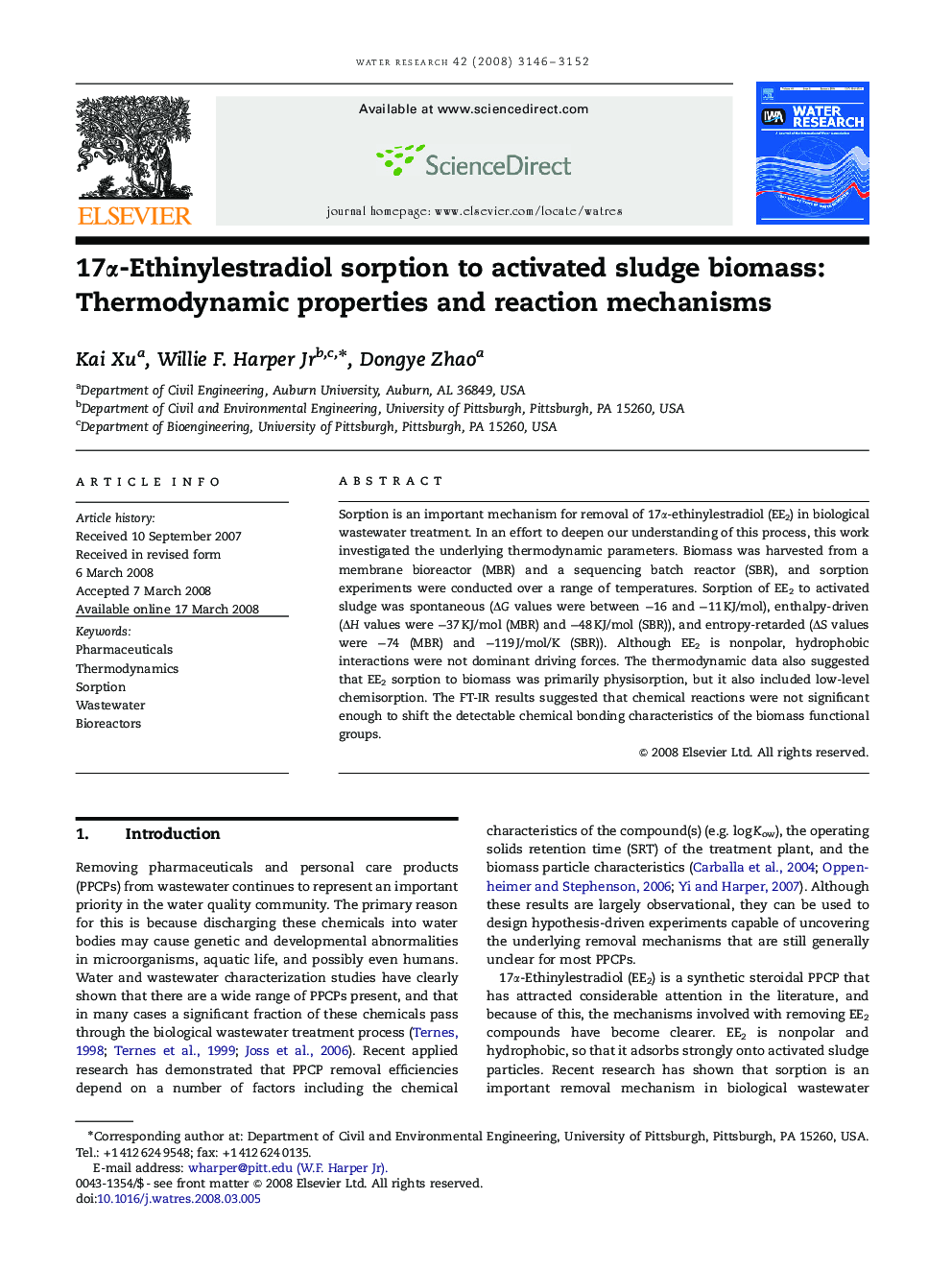| Article ID | Journal | Published Year | Pages | File Type |
|---|---|---|---|---|
| 4485587 | Water Research | 2008 | 7 Pages |
Sorption is an important mechanism for removal of 17α-ethinylestradiol (EE2) in biological wastewater treatment. In an effort to deepen our understanding of this process, this work investigated the underlying thermodynamic parameters. Biomass was harvested from a membrane bioreactor (MBR) and a sequencing batch reactor (SBR), and sorption experiments were conducted over a range of temperatures. Sorption of EE2 to activated sludge was spontaneous (ΔG values were between −16 and −11 KJ/mol), enthalpy-driven (ΔH values were −37 KJ/mol (MBR) and −48 KJ/mol (SBR)), and entropy-retarded (ΔS values were −74 (MBR) and −119 J/mol/K (SBR)). Although EE2 is nonpolar, hydrophobic interactions were not dominant driving forces. The thermodynamic data also suggested that EE2 sorption to biomass was primarily physisorption, but it also included low-level chemisorption. The FT-IR results suggested that chemical reactions were not significant enough to shift the detectable chemical bonding characteristics of the biomass functional groups.
